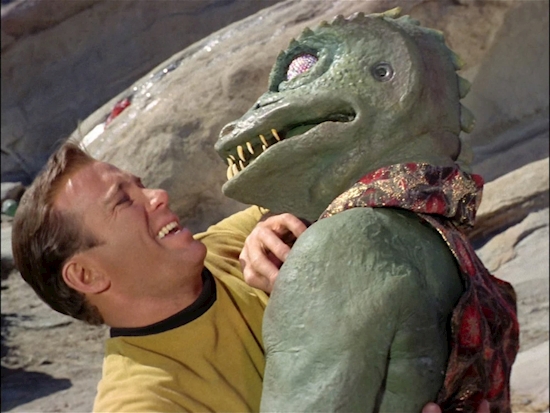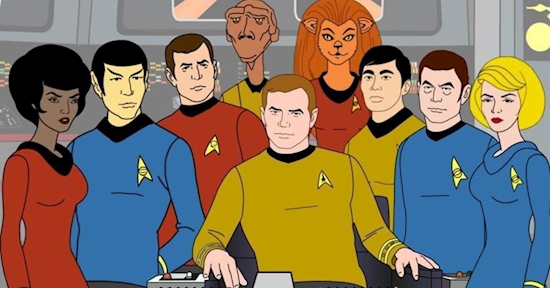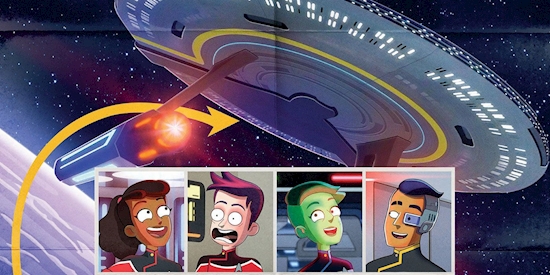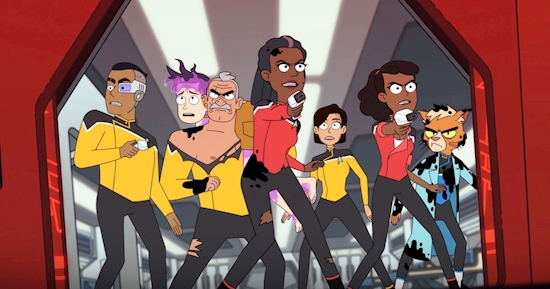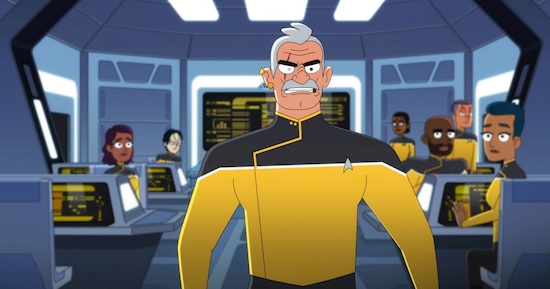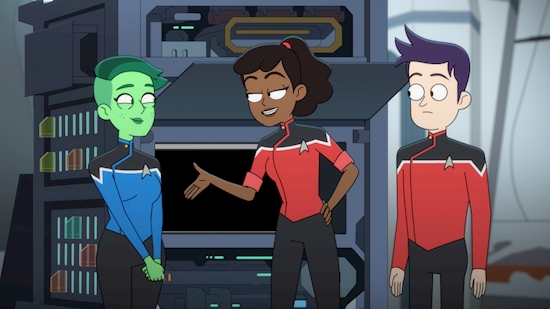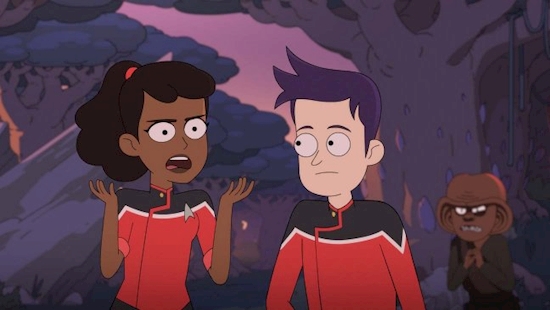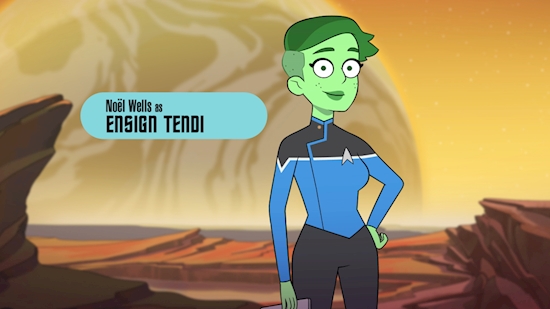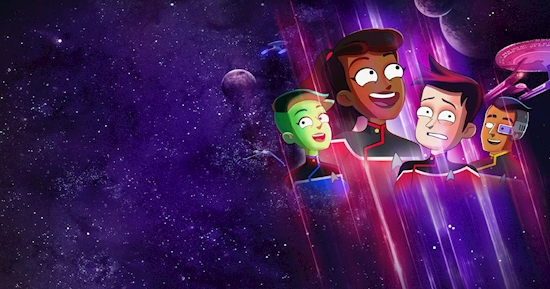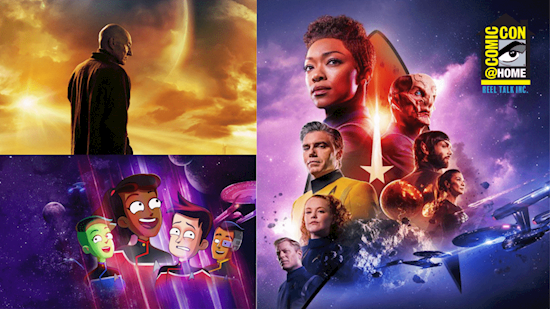Star Trek: The Animated Series – Continuing the mission of NCC-1701 -- in cartoon form!
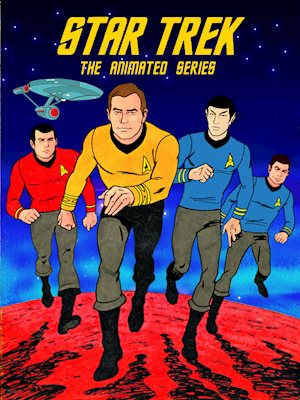 Is Star Trek fandom the most powerful force of nature -ever? If you’re skeptical, consider Star Trek: The Animated Series. Some five years after the missions of the starship Enterprise had ceased running in primetime, Gene Roddenberry’s army was strong enough to get the old band back together – not to mention helping foster the growth of an entire animation studio and essentially create the new genre of science-fiction/superhero cartoons.
Is Star Trek fandom the most powerful force of nature -ever? If you’re skeptical, consider Star Trek: The Animated Series. Some five years after the missions of the starship Enterprise had ceased running in primetime, Gene Roddenberry’s army was strong enough to get the old band back together – not to mention helping foster the growth of an entire animation studio and essentially create the new genre of science-fiction/superhero cartoons.
Filmatron and Hal Sutherland
Hal Sutherland is credited as director for the first “season” of 10 episodes of Star Trek: The Animated Series in 1973. Sutherland was a longtime animation professional who co-founded the nascent Filmatron and the company chased up it’s full-length Treasure Island adaptation of ’72 by signing on with Roddenberry’s plan.
From the experience and popular success gaining in producing the Star Trek animated series, Filmatron would go on to compete with TV cartoon giants Hanna Barbara through the 1970s and into the 80s, cranking out stuff like the Super Friends, The New Adventures of Flash Gordon and He-Man and the Masters of the Universe.
A slightly different Enterprise crew
As viewers were robbed of at least half of the starship Enterprise’s five-year mission due to series cancellation, said original mission continued in Star Trek: The Animated Series. Just as with the original series on CBS, production-wise ST:TAS is probably best described as (sigh) low budget. Sure, the animators at Filmation did what they could – and episodes like “The Magicks of Megas-tu” certainly helped this series win an Emmy based on visuals as much as story – though the penny-pinched scriptwriters turned in some dynamite stories.
Remember Gene Roddenberry on his 99th birthday
Source: redshirtsalwaysdie.comStar Trek Almost Made a Classic Animated Series Style Short Treks Episode
Source: comicbook.comStar Trek Is Copying The Transformers Model
Source: screenrant.comStar Trek: Lower Decks - The Janeway Protocol Explained
Source: screenrant.comStar Trek: Lower Decks Makes First Episode Available for Free
Source: cbr.comDavid Tennant Wants To Join Star Trek Franchise
Source: screenrant.comStar Trek: Prodigy Animated Series Gets A Showrunner
Source: screenrant.comStar Trek: Lower Decks Gives Its Lead a Secret Mission
Source: cbr.comStar Trek: Lower Decks Premiere Recap, Season 1 Episode 1
Source: vulture.comLower Decks: Is Animation Star Trek's Next Frontier?
Source: vulture.com'Star Trek: Lower Decks' Review
Source: hollywoodreporter.comStar Trek: All 3 Characters Played By David Warner
Source: screenrant.comStar Trek: Lower Decks to feature 'legacy' characters
Source: redshirtsalwaysdie.comStar Trek: Lower Decks: 10 Things You Need To Know Before Watching The Parody
Source: screenrant.comStar Trek: Lower Decks Brings Back Key Tech Skipped By Discovery & Picard
Source: screenrant.comStar Trek: All Roles (& Voiceovers) Played By Majel Barrett
Source: screenrant.comStar Trek Comic-Con Panel Showcases New Shows & Diversity
Source: reeltalkinc.comSDCC 2020: Biggest News From Comic-Con
Source: screenrant.comBut it was in the cast and crew that TAS would take the biggest financial hit. Chekhov was slashed from the stories altogether, while Sulu and Uhura might also have gotten the axe had not Leonard Nimoy threatened not to do the show if George Takei and Nichelle Nichols were not involved.
In any case, the financial shortcoming was paradoxically morphed into a plus by simply having Nichelle Nichols, Majel Barrett and James Doohan voice new alien characters – aliens who physically could not have been pulled off on crummy 1960s/70s network TV budgets in the pre-CGI days. Aboard the bridge for TAS are, as in The Original Series, Kirk, Spock, McCoy, Scotty, Sulu and sometimes Uhura. Added to the mix were the sort of aliens the original series never could have pulled off. Additional members of the crew getting the limelight in TAS include the following.
Lt. M’Ress, communications officer (Majel Barrett) – Definitely the most memorable of the Enterprise crew’s TAS addons, she also represented the third of an incredible four major characters in Star Trek lore that Majel Barrett would play. M’Ress was of the feline humanoid species (seemingly an utter natural for the ST universe, no?) Caitlan. As a result of the mix of DNA and voice casting, M’Ress sounds a lot like a mellowed-out version of Lwxana Troi – rather alluring, actually…
In TAS, M’Ress acted essentially as Lt. Uhura’s understudy, serving as communications/science officer when Uhura and/or Spock were on away mission – or when, as for a few glorious minutes of this series, Uhura was acting captain.
Lt. Arex (James Doohan) – Now Arex was the sort of character who could (and should, really) exist only in a series like TAS. A tall orange dude, Arex had three arms and legs – “They’re limbs, Jim, but not as we know them.” – and acted as a sort of Mary Sue, filling in gaps in episodes when an extra character was desired. In an effort to make Arex vocally distinguishable from Scotty, James Doohan voices Arex with a lilting (and, let’s face it) pretty annoying, voice.
A silly alien of bland characterization (we know he plays the Edosian lute; wow) and undefined role, Alex was forgotten altogether, and his home planet was only ever namedropped once more in all of Star Trek history. Star Trek Guide head canon has the Jar Jar Binks of the Star Trek universe given a fitting end, likesay, this.
Ari bn Bem, official observer/“honorary commander” (James Doohan) – Or just “Bem” for short, as was titled the single episode featuring this rather insane character who mostly represents some serious wasted potential. (Any way we can get him into Star Trek: Discovery…?) Bem was a Pandronian, an ostensibly superior species to those within the Federation though Bem irritatingly refuses to understand the correct order of name and rank within a form of address. After apparently locking himself away in his quarters for six missions, Bem emerges ready to fulfill his role as official observer/ambassador.
Yet Bem actually *observes* far less than creates conflict among intelligent Stone Age reptilian/avian/humanoid folks, the blissed-out Uhura-sounding Disembodied Alien who protects them, and Kirk’s away team. After talking a whole lot of baktag, utterly dissing on Kirk and homo sapiens generally, Bem turns into a humbled jackass after a second rescue attempt by the Enterprise team.
And if you think folks like Picard and Janeway take the Prime Directive too seriously, this dude is ready to commit suicide (or at least his species’ version of it) over the incident. No, really. On a supposed children’s show. I’m telling ya, the 1970s were hardcore.
Nurse Christine Chapel (Majel Barrett) – All right, so Majel Barrett’s assistant to Dr. McCoy was in the original series as well, but she rarely got her moments. Thanks to a trimmed-down cast, however, Mrs. Gene Roddenberry’s character moves to the forefront to get some quality time in most TAS episodes. Definitely the peak of the character’s run in the ST universe on-screen was serving as second-in-command on a rescue mission led by Lt. Uhura. By the time of Star Trek: The Motion Picture, Chapel became a full-on M.D. and within a few years rose within Starfleet to the position of Commander. (Damn, that Enterprise crew sure produced a lotta top officers…)

